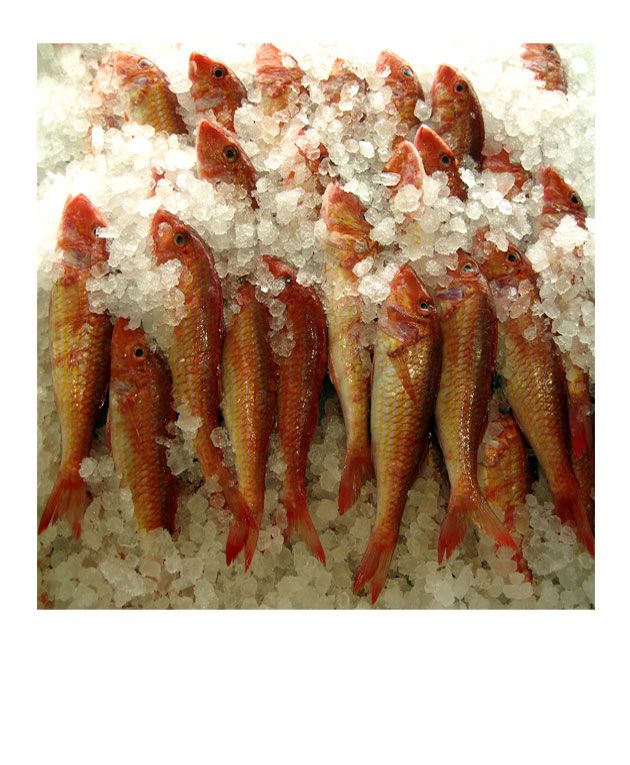Tuesday, February 28, 2012
Sunday, February 26, 2012
Square Cylinder: Sarah Walker
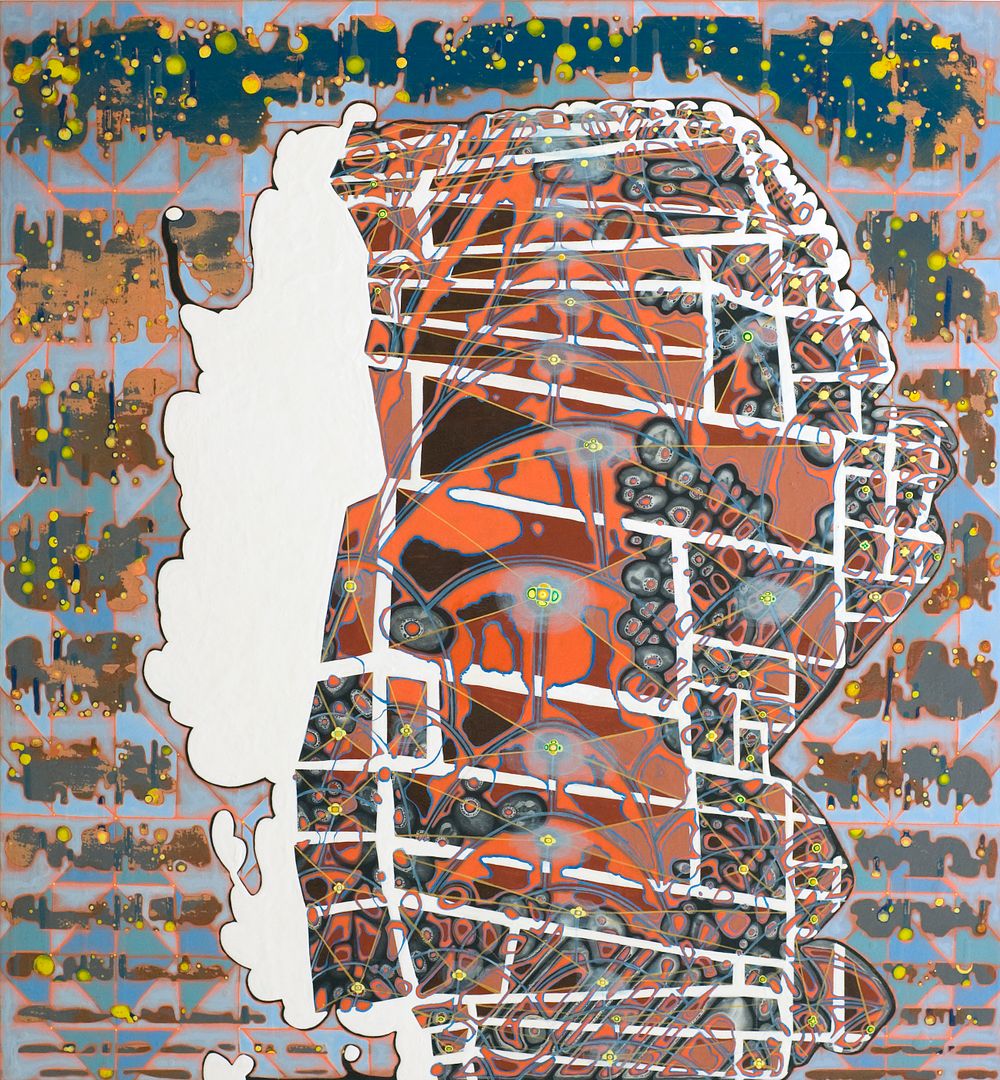 |
| Sarah Walker "Mount Meru" 2012 Acrylic on panel 28 x 26 inches |
Read it here.
Image credit: courtesy, Sarah Walker, 2012
Thursday, February 23, 2012
A "Murky, Mushy Squishyness"
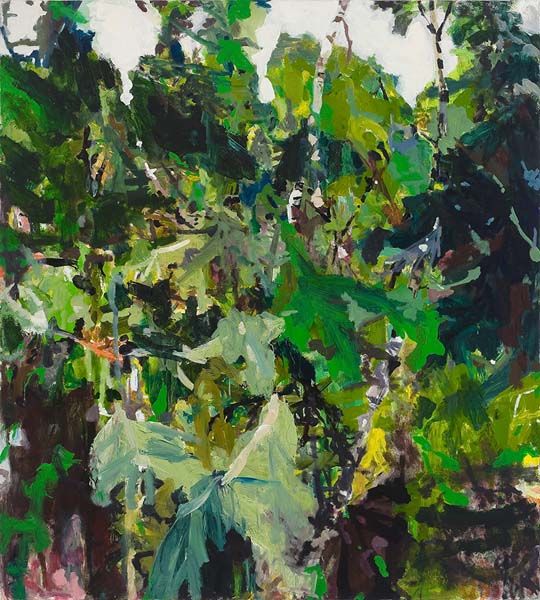 |
| Allison Gildersleeve "Giants" 2011 Oil and alkyd on canvas 60 x 54 inches |
Last week, I observed that Kota Ezawa's animated video, "City of Nature," "mov[es] from pastoral visions [...] to more abstract, riotous scenes of muted colors and shapes -- piles of leaves and tangles of branches that aren't at once recognizable."
Allison Gildersleeve is currently exhibiting similarly "riotous" visions of nature in "Let Me Show It To You Unfixed," at Asya Geisburg Gallery, in New York. From the press release:
"Gildersleeve starts with the ubiquitous and the known, and ends with the deliriously unfixed. All we are left with are discrete moments of seeming understanding and placement, and open-ended wandering. Instead of fixity, paint's murky mushy squishyness reigns victorious."Some of Gildersleeve's paintings are too murky and squishy -- these lose the dynamic tension between subject and rendition -- but her best paintings crackle with energy, vigorous hybrids of paintings by (the undersung) Amy Talluto and Cecily Brown. Plus, Gildersleeve has one of the coolest surnames in contemporary art (and that's fact, not opinion!).
Based on the gallery reproductions, I've included images of the show's two strongest paintings here.
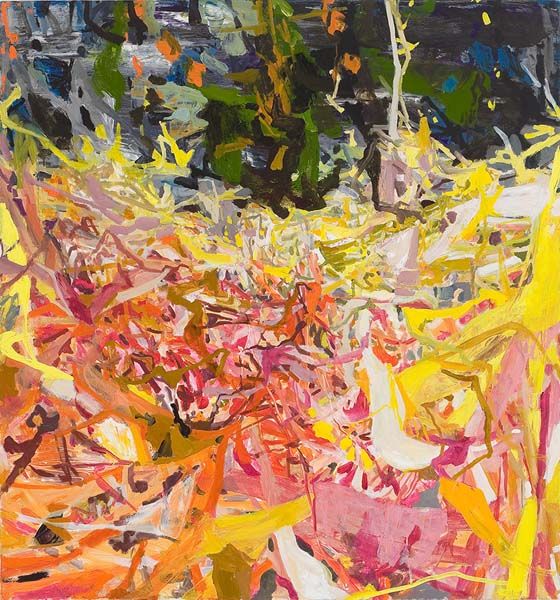 |
| Allison Gildersleeve "Candyland" 2012 Oil and alkyd on canvas 58 x 54 inches |
Thursday, February 16, 2012
"Unreliable Narrator": Ward Shelley at Pierogi
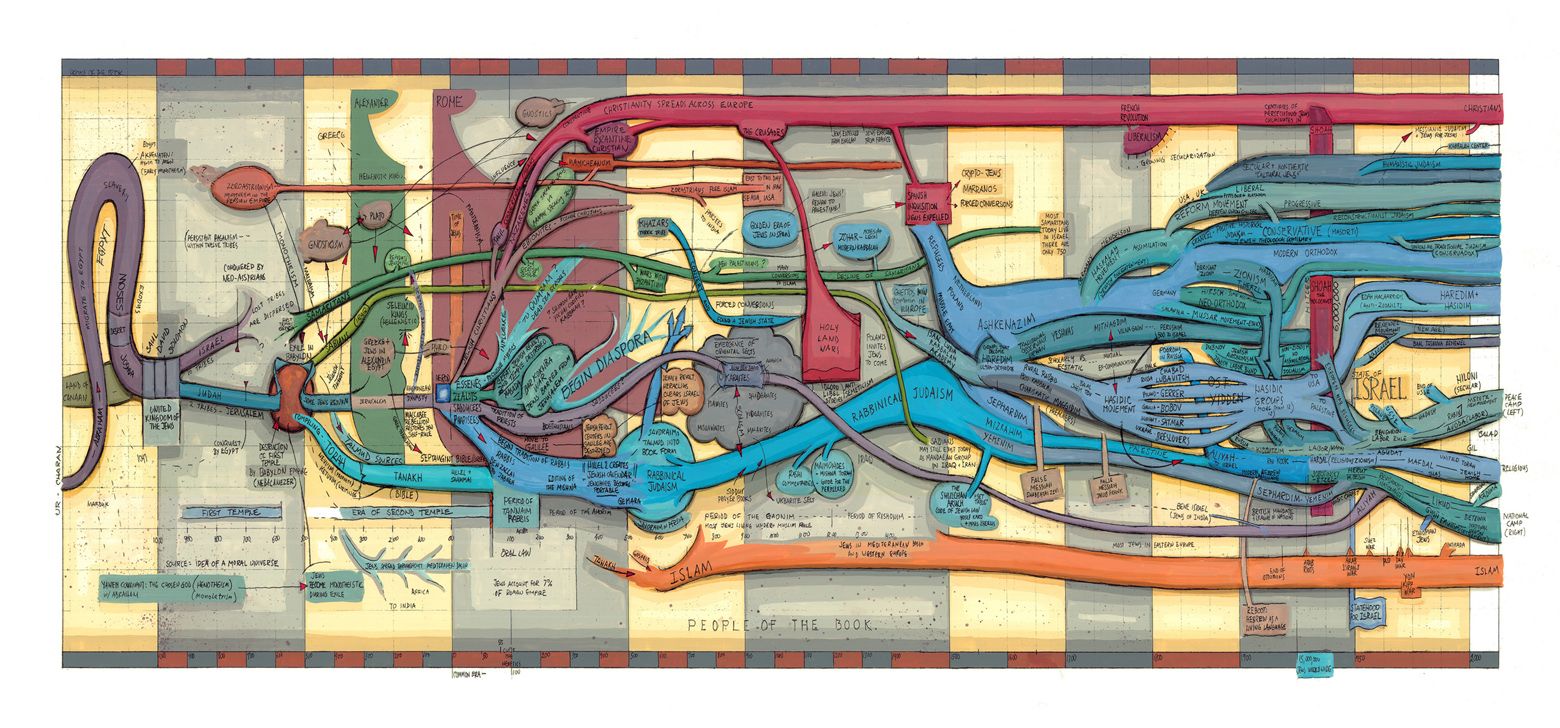 |
| Ward Shelley "People of the Book" 2012 Oil and toner on mylar 36 x 75.5 inches |
"[Shelley's] striking [...] paintings anatomize the development of intellectual and social streams within the humanities. The artist describes them as 'attempts to use real information to depict our understandings of how things evolve and relate to one another, and how this develops over time.'Aesthetically speaking, I liked every piece in the show, but the most edifying works were those that considered "significant, sweeping lineages," and I concluded the write-up with the hope that Shelley's lens would broaden.
In spirit as well as in appearance, then, Shelley's paintings are cousin to phylogenetic trees, the taxonomic diagrams that biologists use to denote evolutionary relationships among species. But, though Shelley's genealogies look like mappings of biological exuberance, the subjects of his brightly colored, illustrative works are not so scientific: Frank Zappa; Beat Generation writers; nodes of postmodern philosophy; modern art movements."
Tuesday, February 14, 2012
Review In Brief: Kota Ezawa at Haines Gallery
 |
| Kota Ezawa Still from "City of Nature" 2011 DVD, 4 minutes Edition of 10 |
Friday, February 10, 2012
Chris McCaw: Drawing Time
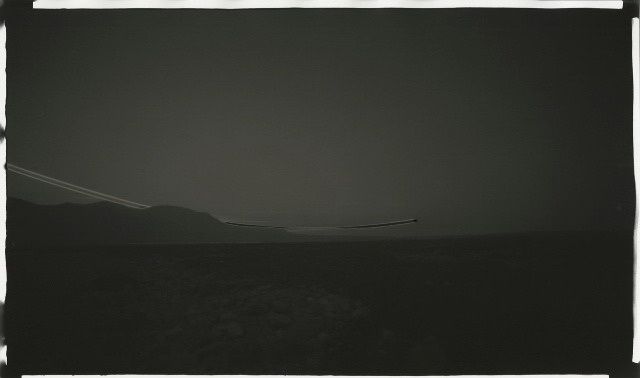 |
| Chris McCaw "Sunburned GSP#420 (Arctic Circle, Alaska)" 2010 Unique gelatin silver paper negative 12 x 20 inches |
Saturday, February 04, 2012
Choosing Past and Future
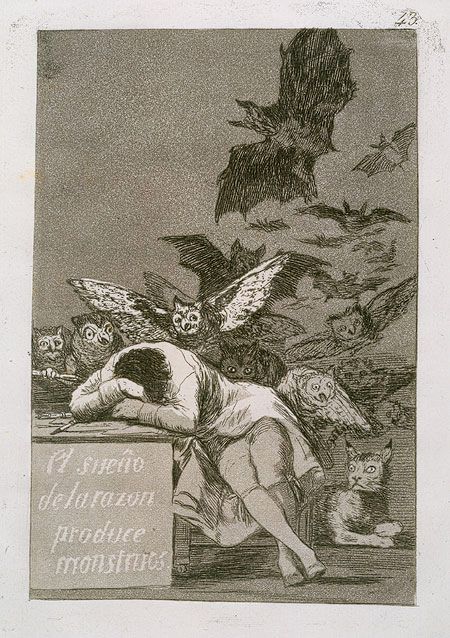 |
| Francisco Goya "The Sleep of Reason Produces Monsters" 1797 Etching, aquatint, drypoint, and burin |
"It is the reviving wine of history that defends the future against the past."As high school students, we're often told that history repeats itself, the implication being that a sound education in history will allow us to avoid repeating past mistakes. I think of this as the "Groundhog Day" school of thought. It's true, despite the fact that most people (and states) tend to trip over the same stumbling blocks time and again.
- Lewis Lapham, "Democracy 101"
(Harper's Magazine, April 2011)
Still, I prefer Lapham's formulation above because his statement implies that the study of history provides us with the necessary confidence to continue and to hope, to view our progress as two steps forward for one step back. Moreover, it's important for us to choose the bottle of wine that we drink from. As President Obama articulated in his brilliant inaugural address,
"the time has come to reaffirm our enduring spirit; to choose our better history; to carry forward that precious gift, that noble idea, passed on from generation to generation."May we choose wisely, and drink deep.
Subscribe to:
Comments (Atom)

